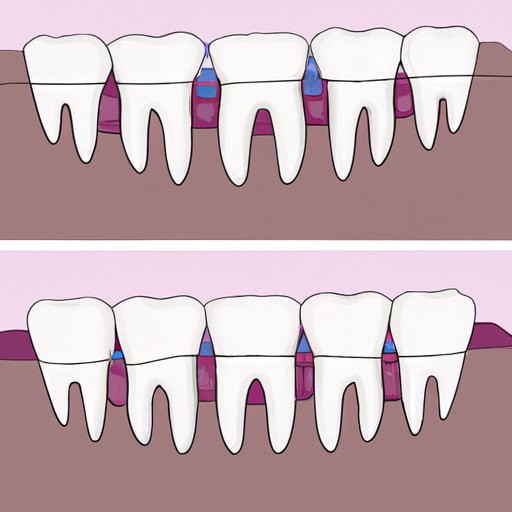Introduction
Missing teeth can be a source of discomfort and self-consciousness. Fortunately, dental bridges offer a simple solution for restoring a natural-looking smile. In this article, we’ll explore dental bridges, their purpose, types, placement process, and more, to help readers make informed decisions about their dental health.
Explaining the Purpose and Types of Dental Bridges
Dental bridges are prosthetic devices used to replace missing teeth. They typically consist of two abutment teeth and one or more pontics (artificial teeth) that are supported by the abutment teeth. The purpose of a dental bridge is to provide a functional and natural-looking solution for replacing missing teeth.
There are three main types of dental bridges: traditional, implant-supported, and Maryland bridges. Traditional bridges use abutment teeth on either side of the gap with a pontic in between. Implant-supported bridges use implants that screw into the jaw to support the pontic. Maryland bridges use a metal or porcelain framework bonded to the abutment teeth on either side of the gap. Each type has benefits and potential drawbacks that patients should consider before choosing a solution.
The Importance of Replacing Missing Teeth
Missing teeth can have a significant impact on a person’s dental health, as well as their overall well-being. Gaps in the teeth can cause jawbone loss, misalignment, and pain. As adjacent teeth shift into the gap, it can cause additional dental issues. Additionally, missing teeth can contribute to speech impediments and self-esteem issues. Dental bridges are one possible solution to these problems.
The Bridge Placement Process
The placement process for dental bridges usually takes two or more visits to the dentist. The first appointment typically involves preparing the abutment teeth for the bridge. This involves removing a portion of enamel from each abutment tooth to accommodate the bridge’s crowns. Impressions of the teeth are taken to ensure that the bridge fits perfectly. These impressions are used to create the bridge in a dental lab, which can take several weeks. During this time, patients may wear a temporary bridge. Once the permanent bridge is complete, the dentist will check the fit of the bridge before cementing it into place.
Cost-Effective Options for Missing Teeth
When considering dental bridges, cost is an important factor to consider. While dental implants and removable dentures are other options, dental bridges are often more cost-effective in the long run. Implants require surgery and can be more expensive, while dentures need to be replaced more frequently. Insurance may cover a portion of the cost of dental bridges, making them a feasible option for many patients.
Life After Bridge Placement
After the placement of a dental bridge, it is essential to maintain good oral hygiene practices. Patients should brush twice a day, floss daily, and use a mouthwash to prevent plaque buildup. They should also avoid hard or chewy foods, which can damage the bridge. Proper maintenance can ensure the longevity of the bridge, which can last up to 15 years with proper care. If the bridge becomes damaged or feels loose, patients should contact their dentist immediately to avoid further complications.
Conclusion
Dental bridges are an effective solution for replacing missing teeth, reducing the risk of dental complications and restoring a natural-looking smile. Understanding the purpose, types, placement process, and necessary maintenance is essential for patients considering dental bridges. By weighing the benefits and drawbacks of different solutions, patients can make informed decisions about their dental health.
